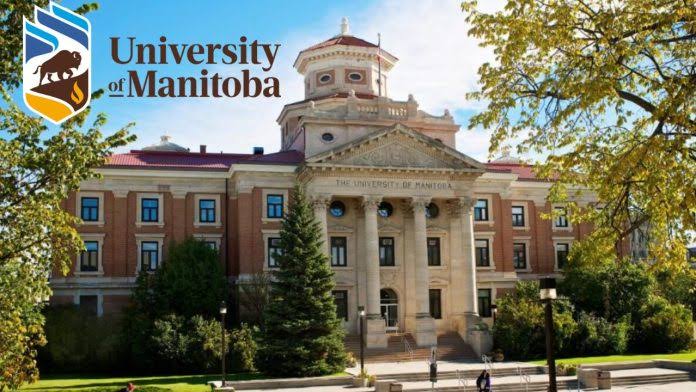Canadian universities offer a broad, evolving ecosystem of scholarships aimed at attracting high-achieving, community-minded, and research-driven students from around the world. While eligibility rules and award sizes vary by institution and year, the overall landscape shares clear themes: emphasis on academic excellence, leadership and service, equity and access, and strategic alignment with research priorities. The guide below compares major scholarship types, highlights how leading universities differentiate their offerings, and outlines practical steps to map yourself to the right awards—without embedding links or referring to any single school’s page.
Core Scholarship Categories You’ll See Across Canada
- Entrance merit awards
- Typically automatic consideration with admission for top high-school or prior-degree averages.
- Tiers of awards often scale with grades, rigor of coursework, and extracurricular distinction.
- Competitive flagship awards
- Separate application, essays, references, sometimes interviews.
- Holistic selection: leadership, impact, originality, and fit with institutional mission.
- Need-based bursaries and grants
- Focused on demonstrated financial need; domestic students often have broader access, but many universities now include international bursaries.
- Renewable when financial need persists and academic standing remains satisfactory.
- Faculty- or program-specific awards
- Tailored to STEM, business, arts, health, or interdisciplinary tracks.
- Frequently linked to donor priorities, labs, or endowed Chairs.
- Research and graduate funding
- Mixture of internal scholarships, teaching/research assistantships, and tri-council or foundation awards.
- Competitive proposals, supervisor endorsement, and research alignment are critical.
- Equity, diversity, and inclusion awards
- Support for underrepresented groups, first-generation students, Indigenous learners, and equity-deserving communities.
- May weigh community advocacy and lived experience alongside academics.
How Leading Universities Tend to Differentiate
- Research-intensive institutions
- Larger portfolios for graduate students, with layered funding packages (stipends, tuition offsets, supervisors’ grants).
- Flagship undergrad scholarships that emphasize leadership and global citizenship.
- Co-op and innovation-oriented universities
- Scholarships tied to experiential learning, entrepreneurship incubators, and industry-sponsored awards.
- Extra recognition for hackathons, start-up experience, patents, or applied research.
- Comprehensive universities with strong teaching focus
- More automatic awards and renewable entrance tiers to widen access.
- Robust need-based bursaries and success-coaching attached to the funding.
- Regional strengths
- Energy, agri-food, oceans, AI, clean tech, or public policy themes may drive targeted scholarships and fellowships.
- Place-based awards encourage community-embedded projects or work terms.
Typical Eligibility Patterns for Undergraduates
- Academic thresholds
- High averages in senior-level courses; IB, A-Levels, AP, or rigorous national curricula can strengthen standing.
- Some schools weight program-relevant courses more heavily.
- Leadership and service
- Documented impact through clubs, volunteering, social enterprise, arts, athletics, or community initiatives.
- Clear evidence of initiative, not only participation.
- Holistic review components
- Short essays on impact and goals, activity résumés, and one to two reference letters.
- For top awards: interviews or virtual pitches that test communication and vision.
Typical Eligibility Patterns for Graduate Students
- Academic and research fit
- Strong GPA in last two years, rigorous methodology training, and publications or conference presentations help.
- Explicit alignment with a supervisor’s research and the department’s priorities.
- Proposal quality
- Novel, feasible, and impactful research questions with sound methods and timelines.
- Knowledge-mobilization plans and ethical considerations articulated.
- Funding stackability
- Many packages combine institutional awards with external fellowships; confirm stacking rules and residency constraints.
International Student Considerations
- Automatic vs. application-based
- Many universities automatically assess internationals for entrance merit; flagship awards usually require a full application.
- Financial need proofs
- Some bursaries accept alternative documentation of need for students without domestic aid histories.
- English/French proficiency
- Meeting language requirements is necessary for admission and may be considered in scholarship competitiveness when communication skills matter.
Research-Centric Awards: What Stands Out
- Interdisciplinary emphasis
- Projects crossing engineering–health, data–policy, or environment–economy domains are often prioritized.
- Societal impact
- Clear, measurable pathways to real-world benefits—public policy briefs, community partnerships, open-source tools, or commercialization plans.
- Leadership and knowledge mobilization
- Workshops, public talks, stakeholder engagement, and translation of research into practice strengthen profiles.
Co-op, Entrepreneurship, and Industry-Linked Funding
- Work-integrated learning scholarships
- Recognize excellence in co-op placements or internships; may be renewed with continued performance.
- Startup and innovation awards
- Pitch-based funds for student founders, often bundled with mentorship, maker spaces, and accelerator access.
- Industry-sponsored prizes
- Criteria may include specific technical skills, capstone quality, or alignment with sector challenges.
Application Process: What Differs by Institution
- Timelines
- Entrance merit: often tied to admission deadlines.
- Flagship undergrad awards: typically require fall or early-winter submissions for the next academic year.
- Graduate awards: synchronized with program offers; external competitions may run 6–9 months ahead of start dates.
- Materials
- Academic transcripts, activity résumé, personal statements, references; graduate applicants add research proposals and supervisor letters.
- Interviews or assessment days
- For the highest-value awards, expect team activities, scenario questions, and communication evaluations.
Choosing Where You’re Most Competitive
- Match your profile
- Academic peak vs. leadership depth vs. research originality—prioritize institutions rewarding your strongest dimension.
- Program-level fit
- Identify labs, studios, or co-op partners that align with your goals; scholarships often follow the program’s strengths.
- Funding architecture
- Look for renewable structures, add-on awards, and the ability to stack institutional and external funds.
Common Pitfalls to Avoid
- Generic essays
- Vague impact claims or recycled statements reduce competitiveness; anchor everything in outcomes and evidence.
- Weak references
- Choose referees who witnessed your leadership or research firsthand and can cite specific examples.
- Last-minute submissions
- Early drafts allow time for feedback, transcript issues, or portal glitches.
Practical Mini-Checklist
- Map deadlines by month and award type.
- Draft a one-page impact résumé tailored to each award’s criteria.
- Prepare two essay kernels: one leadership/impact narrative and one academic/research narrative—customize per award.
- Line up referees early; share your résumé, transcripts, and prompts.
- For graduate applicants: secure supervisor interest and align your proposal to departmental priorities.
Snapshot: What “Strong Fit” Looks Like
- Undergraduate flagship awards
- Top academics, sustained leadership with measurable outcomes, and a compelling vision for campus and community impact.
- Graduate research awards
- High GPA, publications or conference talks, a crisp and feasible proposal, supervisor backing, and a plan to mobilize findings.
- Need-based aid
- Clear documentation of circumstances, realistic budgets, and evidence of academic momentum.
Final Takeaway
Across Canada, scholarship ecosystems are designed to reward excellence and widen access while advancing institutional strengths. The most competitive candidates position themselves where their profile directly matches what a program values—be it leadership and service, cutting-edge research, entrepreneurial drive, or equity-centered impact. If you align your story, referees, and timelines to those priorities, you can build a funding package that supports your studies and amplifies your goals on a global stage.
If you share your study level, field, and target intake, I can draft a customized shortlist of Canadian universities and scholarship types you’re most likely to win, along with a month-by-month application plan.




Very Insightful
I think this should be of great help
This is very nice
Love it
It should be encouraged more please